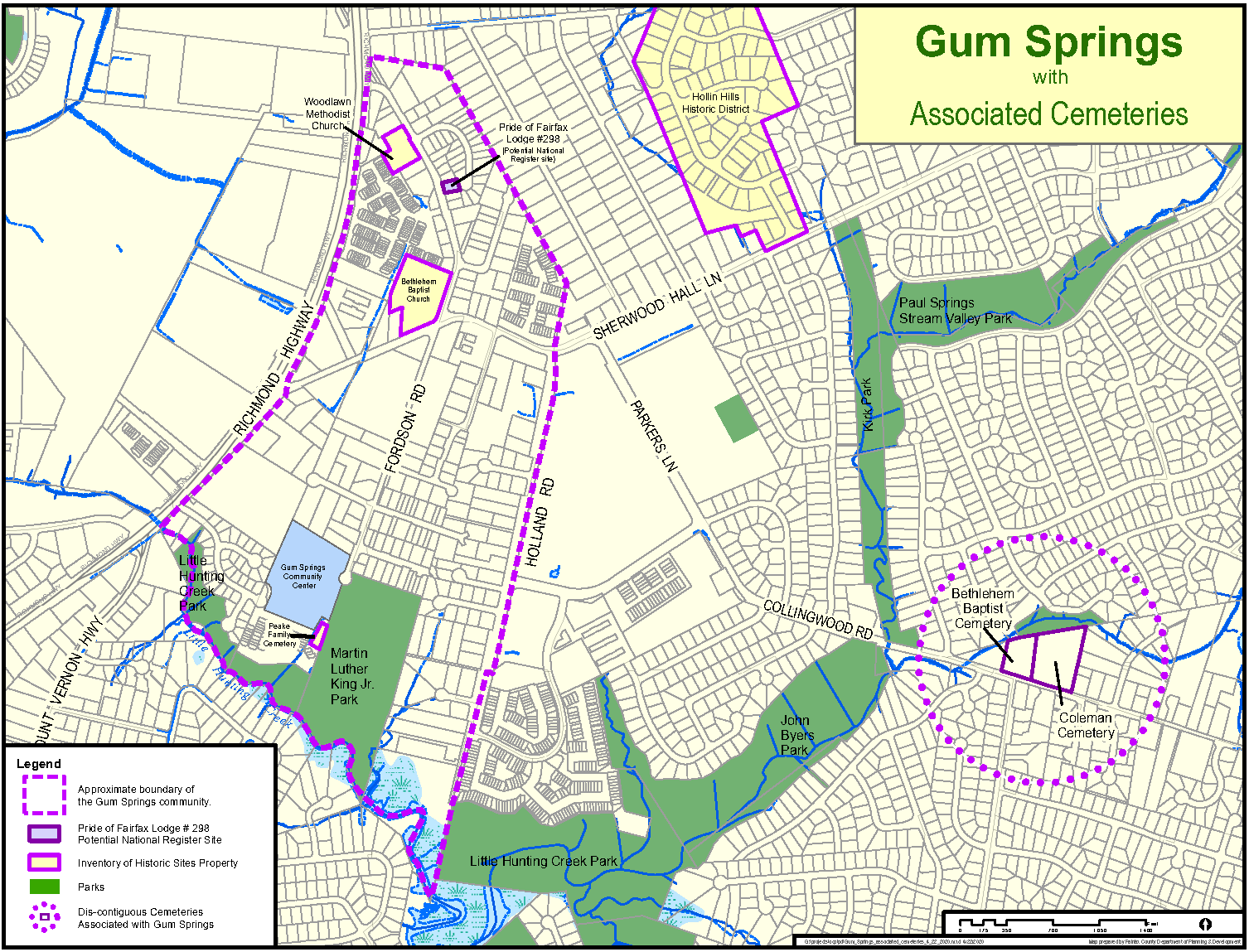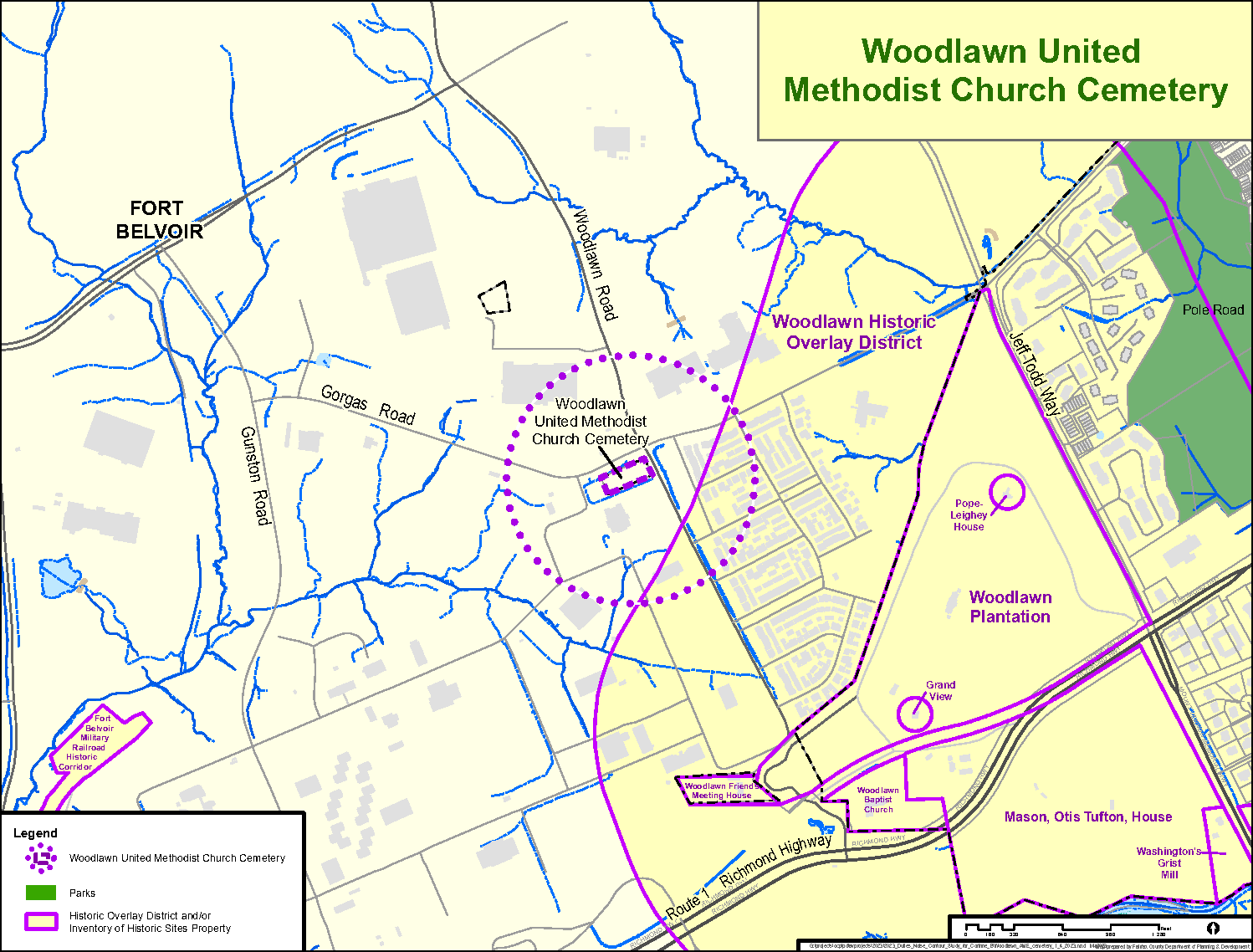Frequently Asked Questions
The project team has complied a list of frequently asked questions regarding the Gum Springs study.
Glossary of Terms
A glossary of common historic preservation terms is available for reference.
About Heritage Resource Architectural Surveys
The project team has put together an informational flyer with everything you need to know about Heritage Resource Architectural Surveys. Take a few minutes to give it a look, so you can better understand what this type of survey entails and why it’s being conducted for the Gum Springs community.
Cultural Landscapes
A cultural landscape is a geographic area that reflects how people have interacted with their environment over time. These spaces can be intentionally designed or evolve over time through human use. Examples of cultural landscapes include agricultural areas, urban neighborhoods, parks, battlefields, historic building sites, and sacred sites.
Easements
Preservation easements are a type of conservation easement which can be donated by a property owner to preserve important characteristics of a historic property in perpetuity. By donating a conservation easement, property owners can receive tax benefits while preserving a piece of history.
Fairfax County Inventory of Historic Sites
The Fairfax County Inventory of Historic Sites (Inventory) is a list of historically or culturally significant resources in Fairfax County. Administered by the Fairfax County History Commission (FCHC), the Inventory was created in 1969 to encourage the preservation of culturally important and irreplaceable Fairfax County buildings and sites. The Inventory is used as a planning tool, and sites listed in the Inventory are included in the Comprehensive Plan, which encourages their preservation.
Historic Contexts
Historic contexts provide the larger story for how buildings, sites, and other resources are evaluated for importance at a national, state, or local level. Follow the link below to learn more about historic contexts, and their role in historic preservation planning.
Historic Overlay Districts
Historic Overlay Districts (HODs) are areas with heritage resources that have significant architectural, historic, cultural, or archaeological value, and are protected through additional zoning regulations, which “overlay” the underlying Zoning Ordinance regulations. HODs are designated by the Board of Supervisors (the Board) and are created for promoting the general welfare, education, economic prosperity, and recreational pleasure of the public. These district regulations are administered by the Architectural Review Board (ARB), and alterations or additions to resources located within HODs require ARB review when a county permit is required.
Historic Preservation and Placemaking
Placemaking is a planning strategy that focuses on the unique elements of a community’s identity - such as its buildings, culture, history, and character - to create vibrant and meaningful spaces. Historic preservation often plays a critical role in this process by safeguarding significant architecture, cultural landmarks, and places of intangible heritage.
National Register of Historic Places & Virginia Landmarks Register
The National Register of Historic Places (NRHP) and the Virginia Landmarks Register (VLR), are two preservation tools which are often used to celebrate and promote historic resources. Both Registers are lists of historically and culturally significant properties, including buildings, sites, structures, districts, and objects, that have been recognized for their significance in history, architecture, archaeology, and culture.
Oral History
Oral history is the oldest form of historical recordation and is used in conjunction with written records to develop historic contexts and narratives. Oral histories are important historical tools, because they provide first-person accounts and recollections of significant events.
Traditional Cultural Properties
Traditional Cultural Properties (TCPs) are places that are significant for their association with the cultural heritage of a community. TCPs can help to preserve physical places associated with a community’s intangible cultural identity, maintain a group’s traditional beliefs and practices, and can be eligible for listing in the National Register of Historic Places (NRHP).




